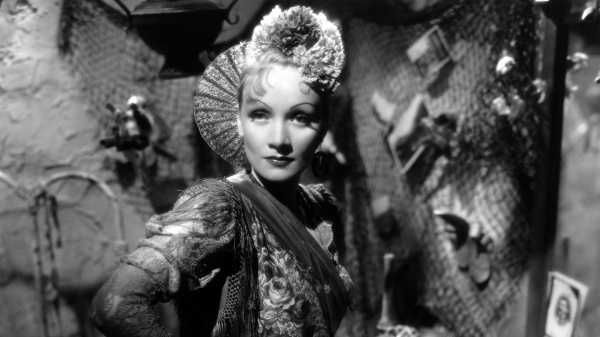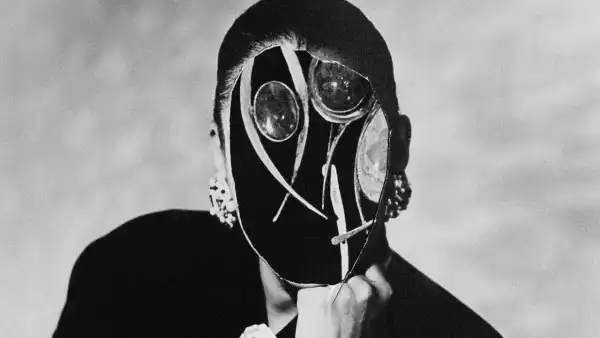
Save this storySave this storySave this storySave this story
Sometimes there’s light at the end of the rabbit hole. When Josef von Sternberg’s film “The Devil Is a Woman,” from 1935, was recently screened, I was curious about how it was received in its first run and found a sharply perceptive review of it in the Times, by one Andre Sennwald, whom I’d never heard of. It didn’t take long to discover that he was hired as the paper’s film critic in October, 1934, at the age of twenty-seven, and that he died in January, 1936, at twenty-eight—by inhaling gas from his stove, in what the medical examiner believed was likely suicide. In that short span, he wrote plentifully. He usually produced four reviews a week, plus a more extensive movie-centered Sunday essay. (The Sennwald archive on the Times site, starting with his first review, on September 18, 1934, includes more than three hundred pieces.) But it isn’t the quantity of his work that makes it worth revisiting. Rather, he counts as one of the most insightful and forward-looking of early American film critics. While fitting new releases into the commercial whirl of the day, he offers a passionate perspective—guided by discerning taste—that reaches further, displaying a self-aware devotion to the future of the art.
As Sennwald’s work appeared practically daily, reading him yields a cross-section of the movies of the time—or, at least, the first-run movies on view in New York. Sennwald’s interests ranged wide: he reviewed big-budget spectacles and hard-nosed action films, comedies and melodramas, documentaries and musicals, horror films, and even some then rare independent films. He reviewed many British movies, and also films from France, the Soviet Union (including a stop-motion animated-feature reimagination of “Gulliver’s Travels”), and even Nazi Germany. (He was keenly alert to propagandistic deformations that marred artistry, including in Hollywood movies; to ones that were inseparable from it; and to others that took the place of it.) In the process, Sennwald reflected both the passion and the burden of such a heavy diet of new releases: his excitement at exceptional films is palpable, but far too much of his effort went to plot description and finding witty ways to say “meh.” In this regard, Sennwald faced a problem still endemic to the field: with attention tightly focussed on new releases, small differences of merit are magnified, and praise starts flowing toward whatever isn’t utterly numbing. He knew it, writing, after more than a year on the job, “We cinema reviewers, when films as unobtrusively dull as ‘Your Uncle Dudley’ happen along, make a minor virtue of anemia by applying such kindly adjectives as amiable to them.” Along with his far-reaching artistic judgments, he offered a near-at-hand consumer guide, often evaluating and praising movies as “entertainment.”
His absorption in what was happening day-to-day in the world of movies made him a crucial witness. It was a world that was moving fast, and, by pure coincidence, Sennwald got the gig at a crucial moment in film history. Talking pictures were still relatively new (the first all-talking movie, “The Lights of New York,” came out in 1928), and a similar technical leap happened on Sennwald’s watch—the release, in June, 1935, of the first Technicolor feature, “Becky Sharp,” which he called both “dramatically tedious” and “incredibly thrilling.”
The main shift that he witnessed in the movie business proved to be an even more substantial transformation of the art: the stringent enforcement of the Hays Code, beginning in mid-1934. At the start of 1935, a few months into that crackdown, Sennwald gave a quick rundown of what had happened. In May, 1934, one Catholic priest in St. Louis “issued posters to several thousand Catholic parishes, high schools and colleges in which he listed five of the current films as ‘unfit to be seen and a menace to decency.’ ” Hollywood ignored it, but “the campaign gained amazing velocity and in a brief period had been so effectively publicized that it swept the country and shook the film city to its foundations.” The results, Sennwald writes, were immediate: fearing federal censorship, the studios “hastily revised their production schedules,” bowdlerized films that they’d already shot, and “even permitted the Hays office to install Joseph Breen as an internal censor for the industry, vesting in him the supreme authority to reject, rewrite and mutilate photoplays before they reached the screen.”
In October, 1934, Sennwald interviewed the supreme director of refined sex comedies, Ernst Lubitsch, about the Code’s impact: “We will be crippled in our artistic efforts to present a candid and accurate view of life.” Lubitsch was right. In early 1935, Sennwald noted that, though the Code’s ostensible goal was “decency,” the essence of the studios’ submission was political. Sennwald writes of “the cinema’s retreat from current realities,” noting that “a disheartening total” of new releases “abandoned all semblance of relation to the passing scene and plunged backward in time for their materials.” For safety’s sake, they took refuge in “the sentimental glamours of the past.” What Sennwald found in new releases was patriotism, militarism, anti-Communism, and a grotesque whitewashing (pun intended) of history.
Sennwald snarked at these regressive ideologies. “West Point of the Air,” starring Wallace Beery and Robert Young, “chants the glories of military service and the importance of iron discipline,” he wrote. When he reviewed a movie called “Red Salute,” his barely repressed disgust found an outlet in sarcasm:
In view of the spread of radical doctrine in our universities, the new photoplay at the Rivoli Theatre issues a symbolic warning to pacifist and liberal student organizations. If they persist in their un-American activities, “Red Salute” tells them, not only will Miss Barbara Stanwyck deny them her allegorical caresses but Mr. Robert Young will punch their noses . . . It is the interesting economic theory of “Red Salute” that prosperity will return to the land upon the deportation of the university insurgents.
As for Civil War movies, he noted that “So Red the Rose” includes “such moments as the enthusiastic cheering of the slaves when their master goes off to fight their liberators, and Margaret Sullavan’s absurdly sentimental appeal to the slaves later on when they are primed for rebellion.”
Sennwald was alert to the prevalent phoniness of Hollywood politics, and also to the studio’s mass-produced faux emotions. He blamed studio producers for their distortion of the subjects at hand; he blamed the star system for forcing screenwriters to turn just about any story into a romantic showcase for the actor’s and actress’s displays; and he blamed the factory-like system of studio production for parcelling out scripts to as many as twenty writers, with inevitably impersonal results. The alternative he endorsed instead was something like an auteur-centric ideal of screenwriting: “The best screen plays now being written are those which result from an author-director collaboration like that of Dudley Nichols and John Ford in ‘The Informer’ and ‘The Lost Patrol’ and of Frank Capra and Robert Riskin in ‘It Happened One Night’ and ‘Broadway Bill.’ ”
Yet there was nonetheless something that Sennwald loved in that system of mass production, which, in the years when he was writing, was entering its maturity. Many enduring genres crystallized in the mid-thirties—the screwball comedy, the grand-scale action adventure, big-boned literary adaptations, the modern musical (a template exemplified by the films of Fred Astaire and Ginger Rogers)—and all were illuminated and endorsed by Sennwald. At the same time as dramatic craft was advancing, the technical aesthetics—cinematography, production design, and a general sense of finish—were also reaching new heights. Talking pictures and their technology had matured, and studio craftspeople, whom Sennwald observed in action during a 1935 visit to Hollywood, deployed the tools with great mastery. The Code may have been a drag on inspiration but that creative fervor was nonetheless so powerful that the over-all effect was more of a slowing, even of a detour, than of a regression. Some of the windows may have been shuttered to block certain views, but the advance was relentless nonetheless—and Sennwald was alert to it. Much as he exulted in the best of independent productions (such as King Vidor’s “Our Daily Bread,” which was privately financed and relied largely on little-known actors), he also understood that few such films would be likely to have the physical finesse and polish of Hollywood productions. He also had a sense that the mighty commercial dramatic machinery represented an aesthetic in itself—and that’s where his advanced cinematic sensibility both expressed itself and confounded itself.
Sennwald’s taste was flexible enough to recognize more than one kind of cinematic ideal. One was represented in the work of Alfred Hitchcock, two of whose British films—“The Thirty-Nine Steps” and “The Man Who Knew Too Much”—were released in New York in 1935 and hailed by Sennwald as “the two foremost screen melodramas of the year.” Sennwald expressed both surprise and admiration that Hitchcock, “possessing one of the most gifted cinema brains in the world . . . is content to expend his talent on such unpretentious matters as espionage and detective mystery.” Sennwald praises the director’s visual sensibility, his acute and rapid editing, and his direction of actors: “Mr. Hitchcock knows how to communicate his mood and his style to the players so that they always are units in a carefully planned scheme rather than so many actors who merely know their lines. In the most electric situation they rarely raise their voices.”
Another kind of movie that thrilled Sennwald was the sort that recognized the limitations of dramatic form and pushed against them. He enthused about the hybrid construction of the Soviet director Dziga Vertov’s “Three Songs About Lenin,” which is a combination of archival footage, documentary, and staged scenes. Vertov “blazes a trail into the infinity which represents the undiscovered possibilities of the camera medium,” Sennwald writes. “His technical skill in weaving this impassioned document out of a variety of pictorial strands, using the film library as effectively as he uses the studio and the open countryside, is of vast importance to the art of the cinema.”
Sennwald also acknowledged a special kind of movie that inherently knew no boundaries. He was fiercely devoted to the great comedians—including W. C. Fields, Mae West, and the Marx Brothers—and understood that, for their movies, standards of dramatic construction didn’t hold. These movies thrilled through the boundary-bursting power of performance. “Mr. Fields is a great comedian because he traffics in high and cosmic matters relating to man’s eternal helplessness, frustration and defeat,” Sennwald writes. “The great clowns intuitively grasp the relation between the mask of comedy and the mask of tragedy.” And Sennwald offers a brilliant one-word theory of what distinguishes the great comedians: “cosmos.” The comedy of “It Happened One Night” is script-anchored comedy, endowed with classic dramatic values, whereas Fields’s comedy, he writes, is a comedy of performance: “Even when, as in his new work ‘It’s a Gift,’ Mr. Fields traverses the screen with not much more in the way of technical assistance than the presence of a camera and a camera man, he is somehow able to illuminate the universal truths with unerring accuracy of intuition and with lavish comic results.”
Perhaps Sennwald’s most ingenious acknowledgment of performance—along with his sense of an unusual form—came with his endorsement of a movie reel recording a heavyweight boxing match between Joe Louis and Max Baer. Sennwald refers to “Mr. Louis’s performance,” calls the fight “one of the great emotional experiences that the motion-picture screen has provided,” and then goes on to define the terms of Louis’s work: “We must measure the actor’s work according to the depth and intensity of the emotion that he arouses in his audience.” He compares Louis’s performance to that of other great nonprofessional actors and describes the resulting filmed fight as “a drama of remarkable power and excitement.”
But Sennwald’s dramatic classicism put him in an odd position with regard to a filmmaker whose work he loved so intensely that it nearly damaged his own system of thought: Josef von Sternberg. Writing of “The Scarlet Empress,” Sennwald proclaims that “Mr. von Sternberg, in addition to being a genius with the camera, is one of the few Hollywood directors who have attempted to apply a personal philosophy of the visual art to the motion pictures.” He adds, “It requires no more than the fingers of one hand to itemize the Hollywood directors whose signatures are inscribed plainly and individually in their work. Mr. von Sternberg is one of them. Because he has an obvious contempt for the conventional movie method and because he values style above the dramatic unities set down by Aristotle for the guidance of story-tellers in every medium, his work is frequently hysterical, confused and incoherent.” Sennwald puts “The Scarlet Empress” in the latter category and calls it “unusually bad” and an “epic wreck” but also “the most interesting failure of the year.”
Sternberg’s next film, “The Devil Is a Woman,” aroused Sennwald’s passionate enthusiasm. Its view of Marlene Dietrich as—damn the censors—a free woman made it, in Sennwald’s eyes, a work of social and cinematic criticism alike:
It is not hard to understand why Hollywood expressed such violent distaste for Josef von Sternberg’s new film. For the talented director-photographer, in “The Devil Is a Woman,” makes a cruel and mocking assault upon the romantic sex motif which Hollywood has been gravely celebrating all these years. His success is also his failure. Having composed one of the most sophisticated films ever produced in America, he makes it inevitable that it will be misunderstood and disliked by nine-tenths of the normal motion picture public.
As Sennwald noted in a subsequent Sunday column, the film was also hated by critics: “It is with no pride whatsoever that I say that I appear to be the only film reviewer in America who doesn’t consider Josef von Sternberg a charlatan.”
Seven months later, Sennwald died. He missed the première of Charlie Chaplin’s “Modern Times” (which he eagerly anticipated) by about three weeks, Fritz Lang’s “Fury” by half a year. He should have been there to write about “Bringing Up Baby,” in 1938; “Stagecoach,” in 1939; “The Great Dictator,” in 1940; “Citizen Kane,” in 1941. The great dramatic machine and storytelling factory was moving ever faster and, though some got caught in its gears, others managed to revamp the whole thing on the fly and hand it off to a new generation. Sennwald was there as the curtain was rising on that sometimes comedic, sometimes tragic drama. If only he had been there to bear witness to its heroic feats and to help make sense of them. ♦
Sourse: newyorker.com







